Questions About Iceland: The Definitive Guide for Senior Travellers
Escorted small group tours for mature and senior travellers to Iceland Designed for couples and solo travellers who like to explore and enjoy learning as they travel the Golden circle, including the Blue Lagoon, Skaftafell National park, Reykjavik and beyond.
14 Nov 19 · 3 mins read
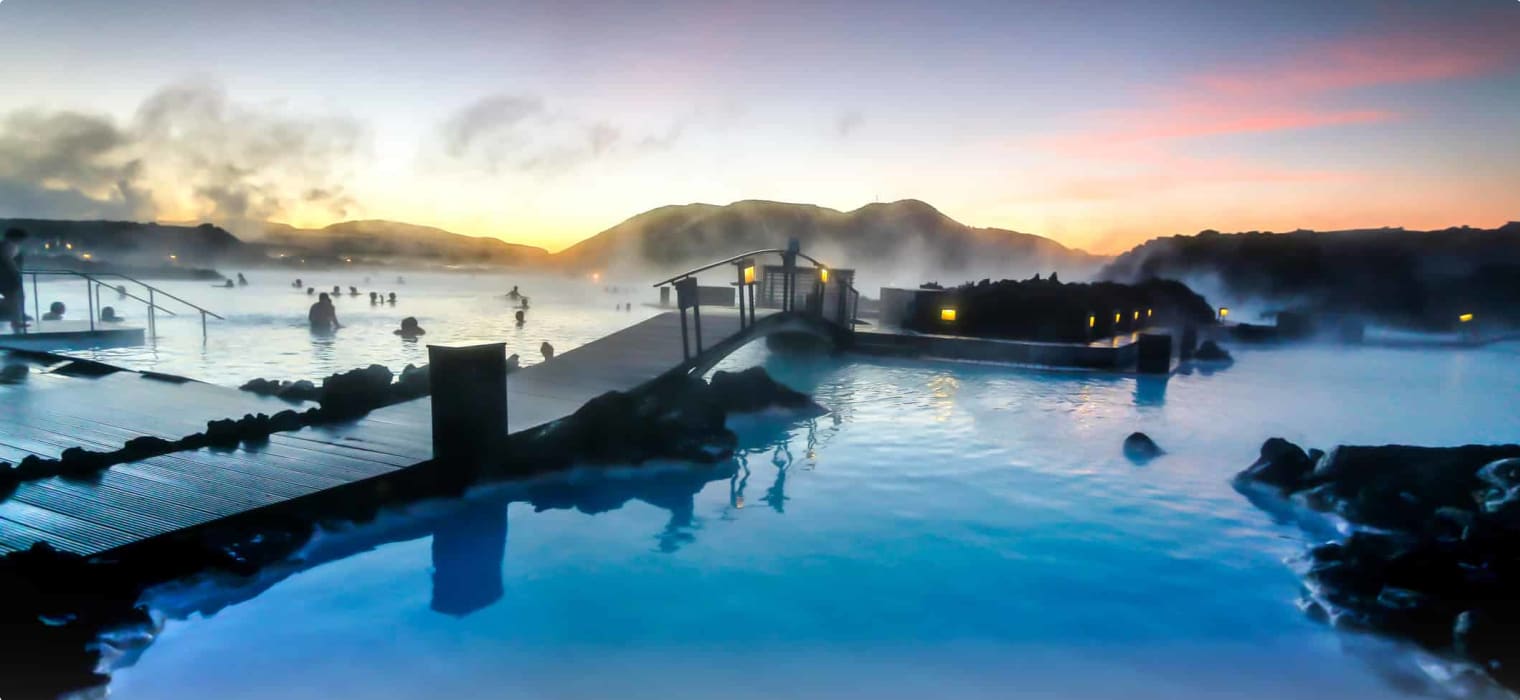
Questions about Iceland for senior travellers
Odyssey Traveller specialises in crafting unforgettable experiences for senior and mature-aged travellers who like to learn and travel as a couple or solo traveller. Providing adventure and educational programs to escorted small group tours since 1983. Odyssey has built up a reasonable knowledge bank to answer questions about Iceland that travellers are likely to ask, as they make their plans to tour independently, or with us as part of a small group tour. We hope that this list of frequently asked questions and the answers we provide will help you with planning your next holiday.
Read on, but please do not hesitate to contact us via the website, or through email or chat if you have more questions about Iceland or our other tours.
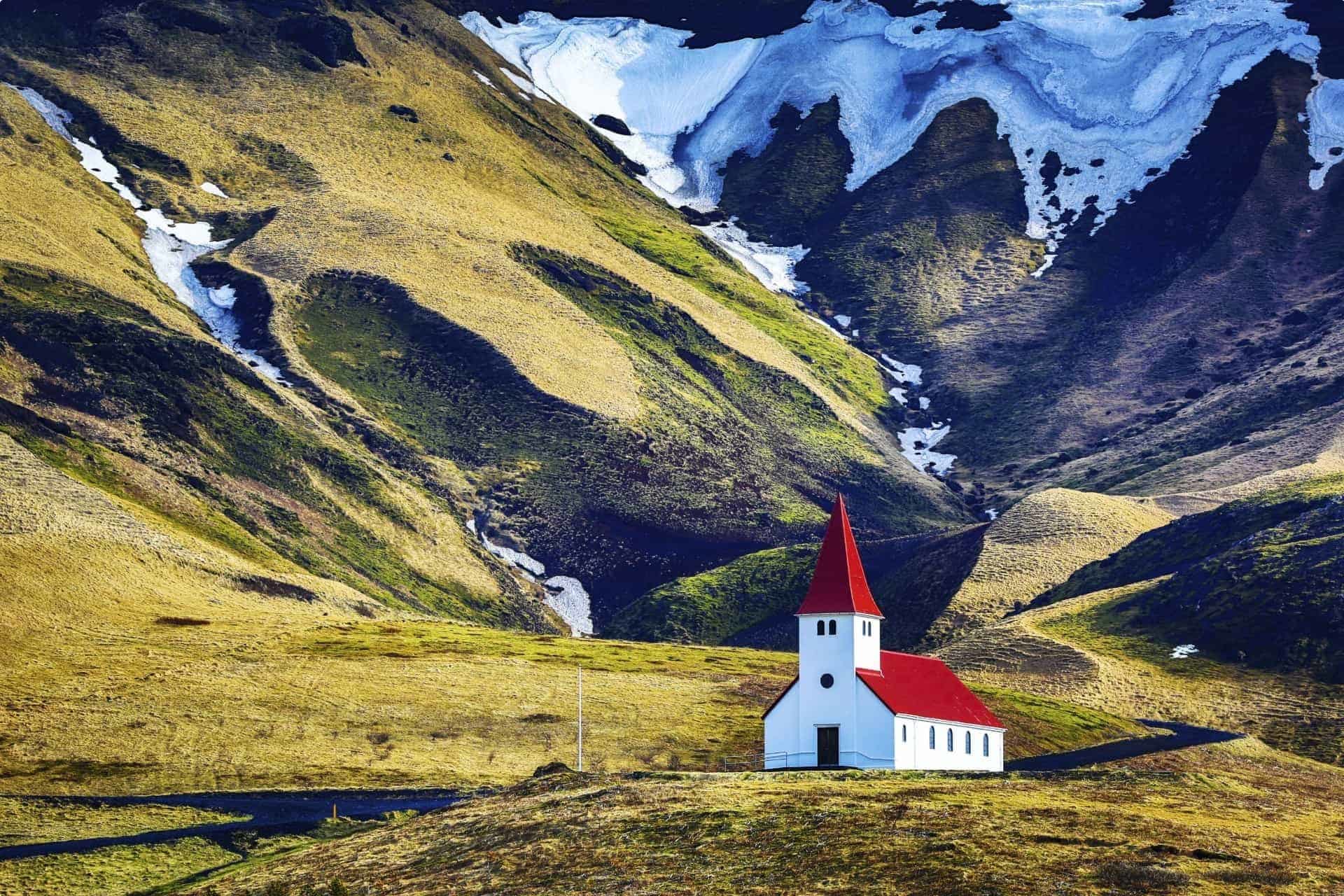
FAQs
Where is Iceland located?
Iceland is a geologically active island located in the North Atlantic. This island country is fairly isolated–its nearest neighbour in Europe is Scotland, lying 800 kilometres (500 miles) away. The capital is Reykjavík. It takes roughly five hours to fly to Reykjavík from New York, and three hours from London.
How did Iceland get its name?
Iceland was said to have been given its name by a grieving Viking named Flóki Vilgerðarson, who lost his daughter to the sea en route to the new settlement, and lost his livestock to the harsh winter. According to the Icelandic sagas, a collection of heroic prose narratives written in the 13th century, Flóki climbed up a mountain and saw the fjord Vatnsfjörður filled with ice, and named the place Iceland. It was the name that stuck, even though the spring ice that Flóki saw may have drifted from ice-covered Greenland (which was named as such by the Viking Erik the Red in some sort of medieval marketing ploy to entice people to settle).
Before Flóki, the sagas say Naddador from Norway named the country “Snowland” as it was snowing when he arrived, and the Swedish Viking Garðar Svavarosson named it after himself.
When was Iceland founded?
Iceland was founded during the Viking age of exploration in the 9th century, the Vikings sailing from Norway and other Nordic settlements to stake claims to land on the island. From Iceland, they sailed further to Greenland and Vinland (North America, named by Leif Eríksson, Erik’s son, after the wild grapes he saw on the shore).
There were no recorded human settlements before this time, but the island was known to the Greeks and to Irish hermits as Thule. However, “Thule” may refer not only to Iceland but to the other regions in the Arctic; the word was used to describe “the northernmost part of the habitable ancient world”.
A Viking assembly, the Althing, was established after the settlement period. Things, from the Old Norse þing, is used to describe these parliaments, and the name survives in the place names across Northern Europe, such as Tinganes (Faroe Islands), Dingwall (Scotland), Tynwald (Isle of Man), and Tingwall (Shetland and Orkney).
In 1397, a Scandinavian union was formed at Kalmar, Sweden (Kalmar Union) bringing the separate kingdoms of Norway, Sweden, and Denmark under a single monarch. Iceland’s chieftains swore allegiance to the Norwegian king, and rule passed to the Danish crown. The rulers of Denmark increased their hold on the country in the 17th century. Iceland won the right for home rule in 1904, but later chose to break all ties with Denmark. The Icelandic republic was established in 1944.
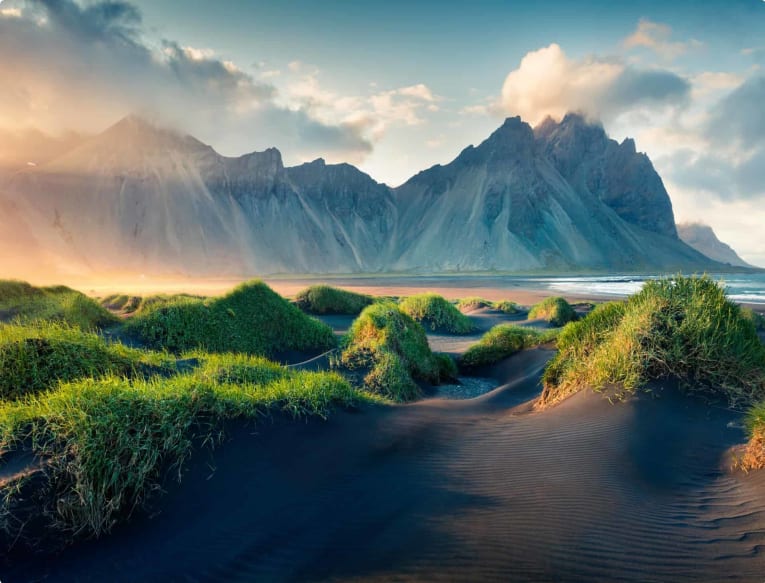
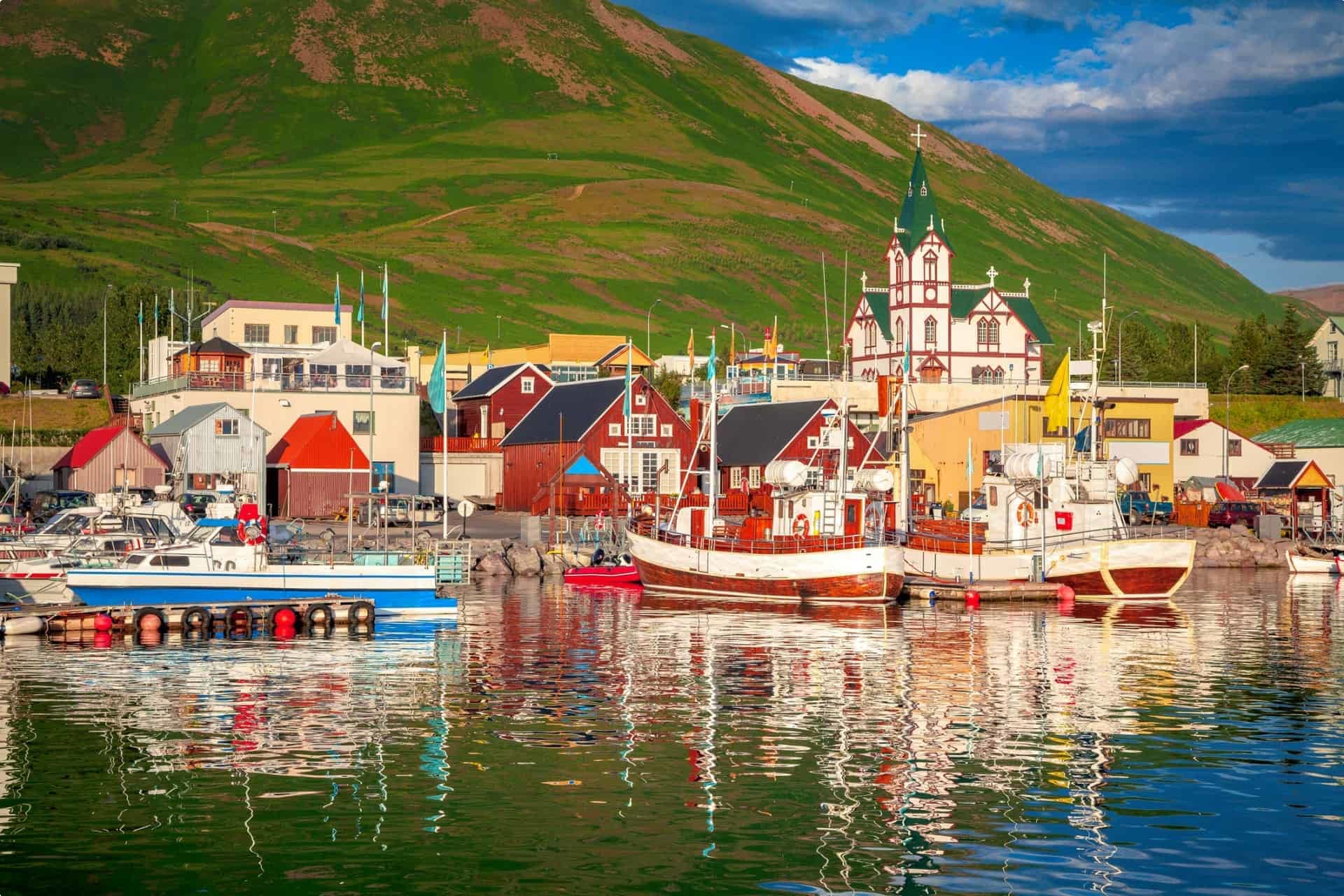

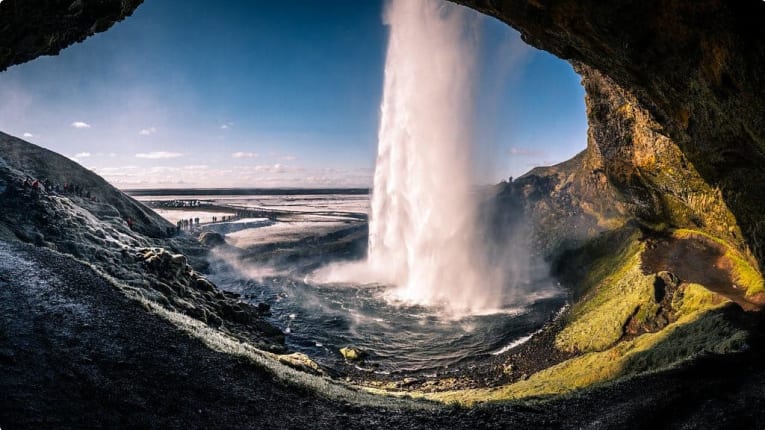
FAQs
What is the language of Iceland?
Icelandic (íslenska) is the official language of Iceland. It is a North Germanic language belonging to the West Scandinavian branch, along with Faroese and Norwegian.
The sagas were written in Old Icelandic, also called Old Norse, but Icelanders today can still read them without difficulty (although pronunciations have changed).
Icelandic managed to survive largely in its original form, even in the face of Danish control, due to Iceland’s geographical isolation and the language’s continued use for literary purposes throughout the centuries.
English is also taught as a second language and is widely spoken in Iceland.
What is the currency of Iceland?
Iceland’s currency is the Icelandic króna (ISK – Íslensk króna; “crown”).
Its currency shares its name with the currencies of other Nordic countries–Danish krone, Swedish krona and Norwegian krone–as they all participated in the Scandinavian Monetary Union in the 19th century, pegging their currencies to gold at the same level as each other. Iceland separated its monetary policy from Denmark when the union dissolved before World War I.
What is Iceland's climate?
Despite its high latitude and proximity to the Arctic Circle, Iceland has a temperate climate thanks to the warming effect of the Gulf Stream.
About 11 percent of the country is covered with permanent ice cap and Iceland has Europe’s largest glacier (Vatnajökull), but it enjoys verdant summers, with snow rarely staying on the ground for days.
In the capital and largest city, Reykjavík, located south of the country, the average temperature for summer is 12 degrees Celsius and around 1 to 2 degrees for winter. Still cold–but not as cold as the winters you may experience in Canada or Russia.
In 2018, the capital’s annual average temperature was 5.5 degrees. Iceland’s meteorological agency reports that “[t]he absolute maximum in Reykjavík was 23.5°C, recorded on 29 July and the absolute minimum was -9.0°C on 19 January.”
However, Iceland’s weather is fickle and may change frequently throughout the day. If you’re planning a trip, make sure to check weather forecasts before heading out, and wear (or bring) layers so you can adapt to the weather changes quickly.

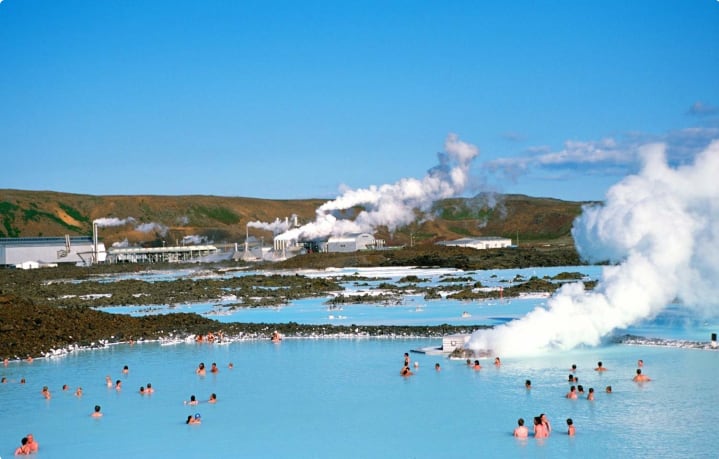
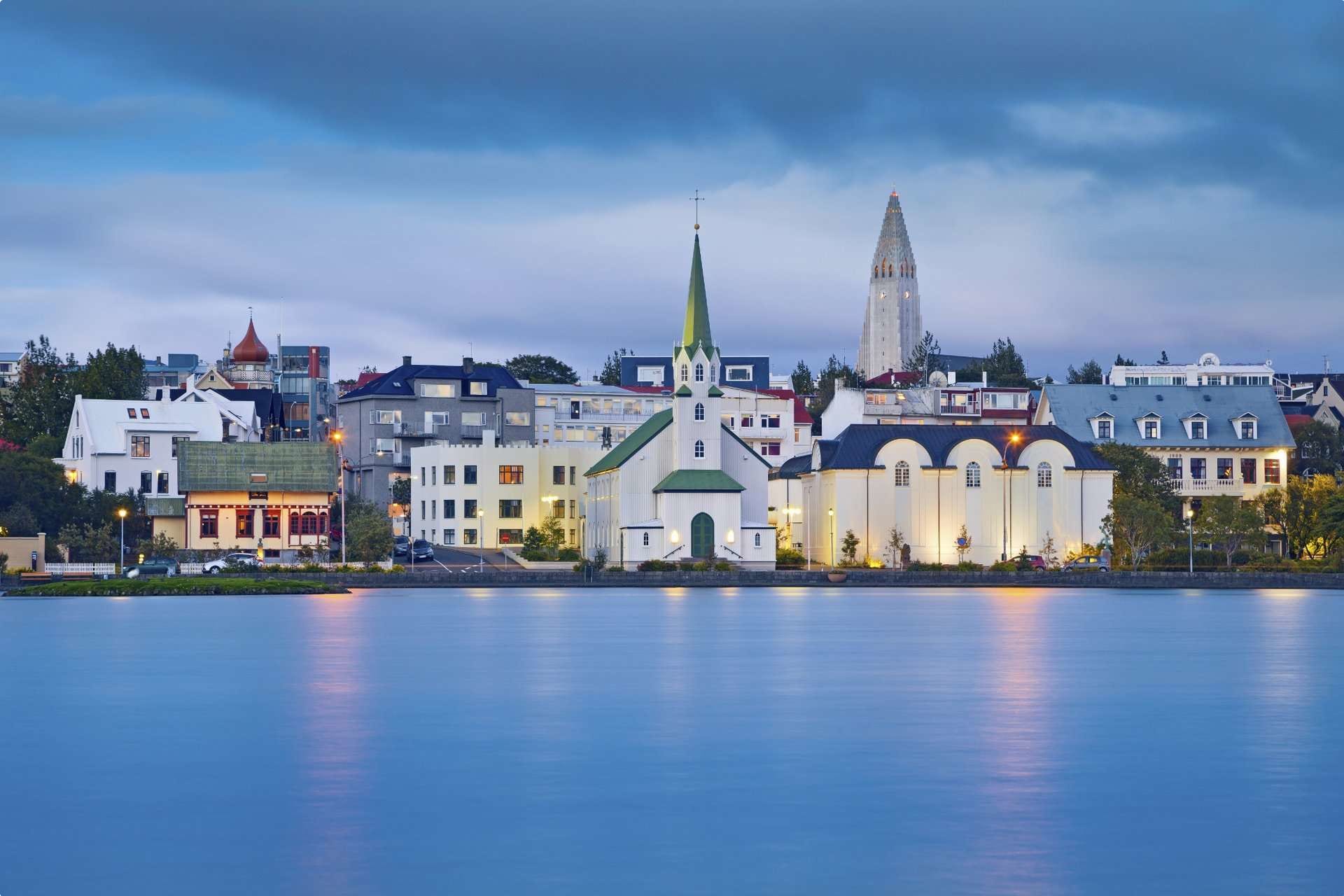
Reykjavik, Iceland

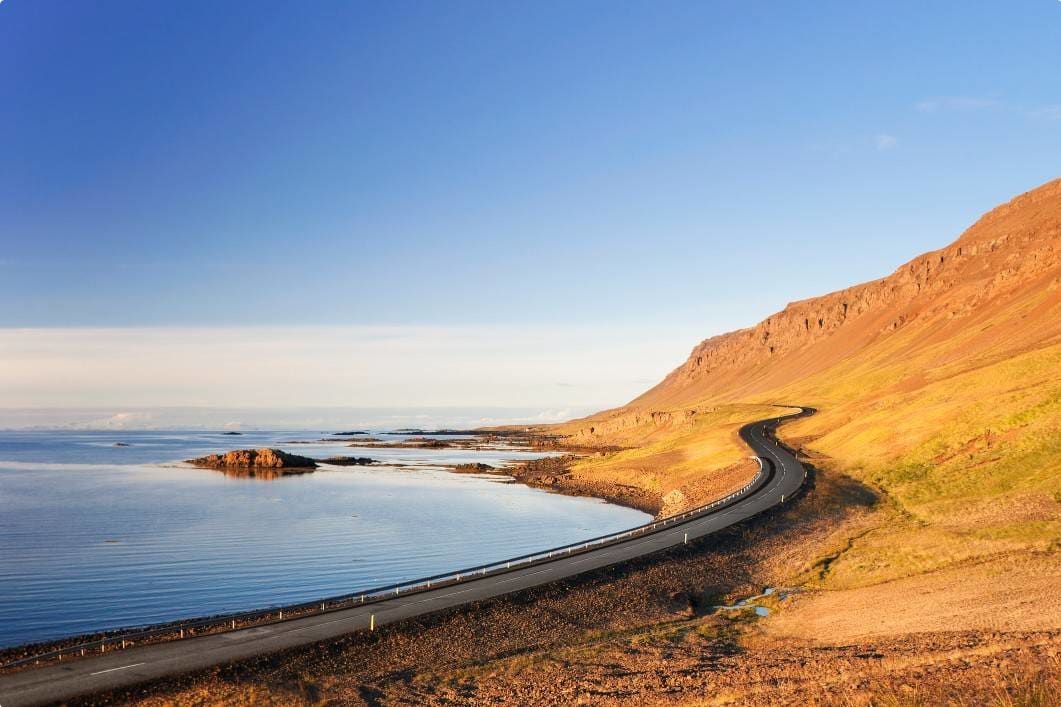
FAQs
When is the best time to visit Iceland?
This will depend on your intended activities. Odyssey Traveller organises Culture & Wilderness tours to Iceland with departures in May and September. These months are the “shoulder season” months in spring and fall, respectively, between the high season of summer (June to August) and the off-season (November to March). This means you get to visit Iceland when it is not too busy with tourists trooping there for the warmer months, but also not when it’s too desolate or too cold that you miss out on certain activities.
Of course, Iceland is a great destination year-round, and the best time to visit will ultimately depend on your personal preferences. Summer is also the time to experience the “midnight sun” in Iceland. Midnight sun is a phenomenon observed north of the Arctic and south of the Antarctic, during which these regions receive continuous sunlight for six months. In Iceland, the sun sets just before midnight from May to August. In winter, many visitors brave the cold to observe the Northern Lights.
Can you visit Iceland without a visa?
Citizens of Australia, Canada, the United Kingdom, and the United States (see full list) need not apply for a visa to Iceland for a stay of up to 90 days total within the Schengen area.
Iceland joined the Schengen states on March 25, 2001, which means a citizen from the Schengen area can visit Iceland without a visa.
If you are a citizen of a country belonging to the European Economic Area, you need not apply for a visa to Iceland; a passport valid during the time of your stay will suffice.
Citizens of countries not on this list must apply for a visa at the applicable embassy or consulate before travelling to Iceland. Click through to see more information, or check with your consulate.
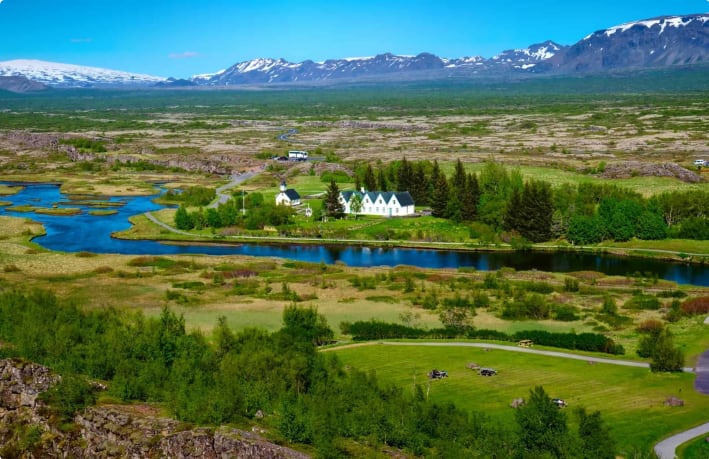
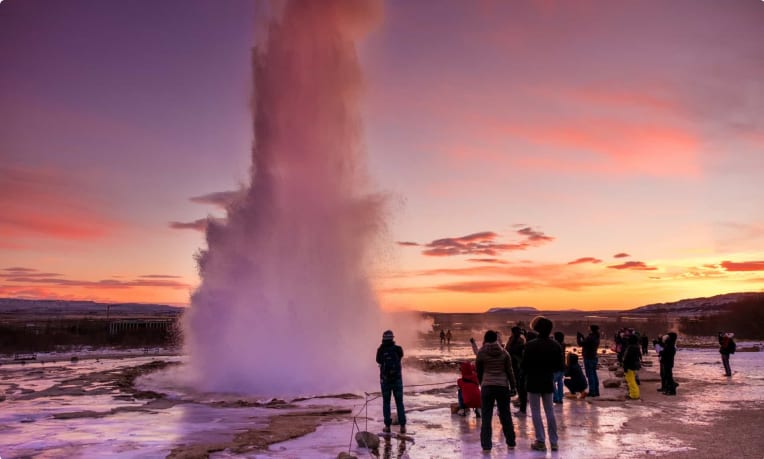
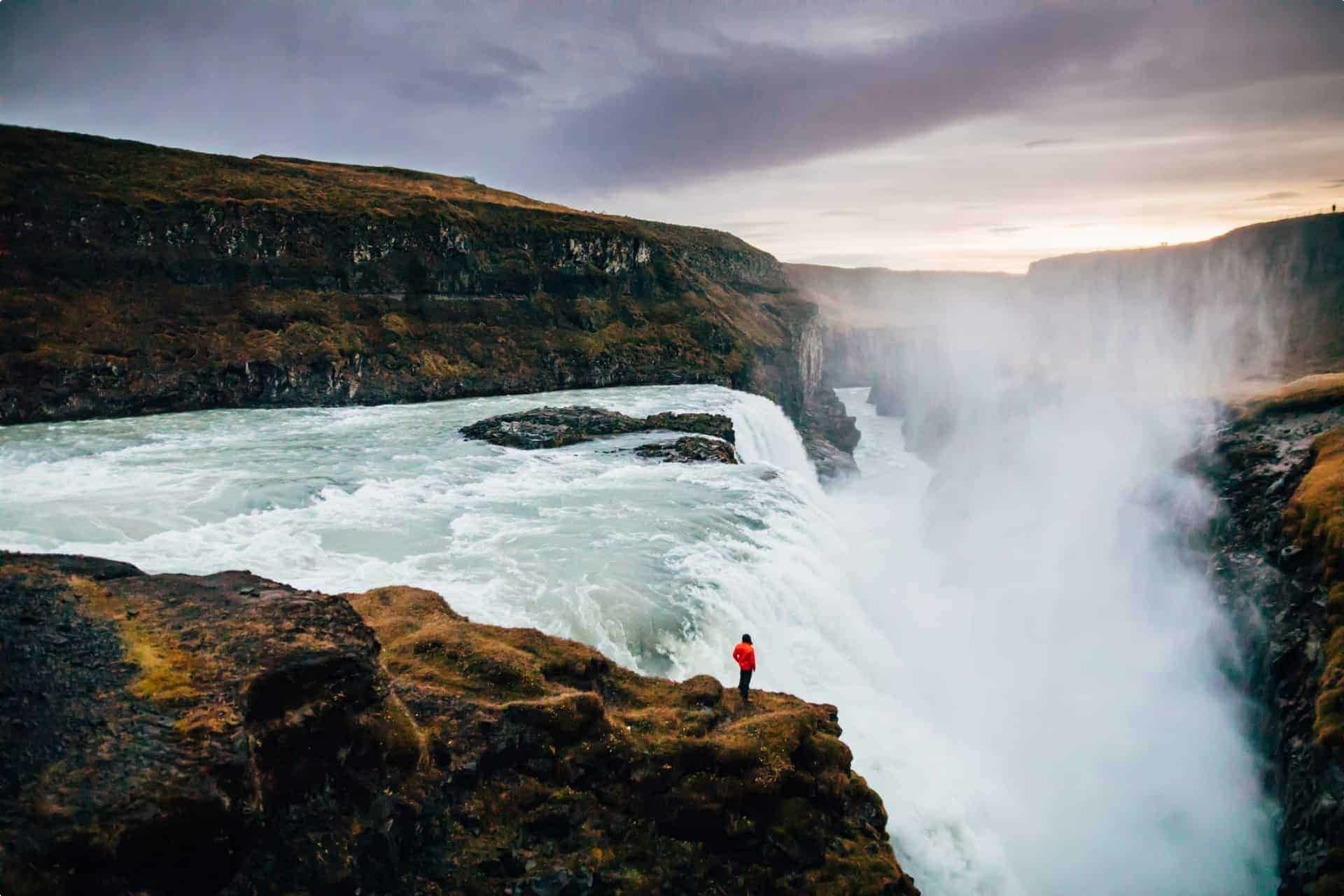


FAQs
Where are the best places to visit in Iceland?
Iceland’s climate, dramatic geological activity, and unique history provide visitors with amazing landscapes and experiences. From spectacular waterfalls and volcanic craters to thermal baths and other hidden gems, you’re sure to marvel at the country’s natural splendour. It is easy to see why many blockbuster films and Hollywood flicks have selected Iceland as a base for their filming locations, with its otherworldly landscapes and cascading waterfalls.
The country’s distinctive topography is the result of a history of tectonic movement and volcanic eruption. For photographer Robert Ormerod, its similarity to the moon inspired his journey through the country, in pursuit of its most extra-terrestrial sites. These are both natural and man-made, as he also takes in Iceland’s distinctive satellites and geothermal domes.
Ormerod details how Iceland was actually visited by Apollo astronauts in the late 1960s. As BBC Travel reports:
NASA believed it was essential for its astronauts to prepare for their intragalactic journey by training in the most otherworldly terrain on Earth. After scouring the globe, officials determined that the Moon’s lunar landscape was strikingly similar to that just outside Húsavík, a quiet 2,300-person fishing community on Iceland’s northern coast. NASA sent 32 astronauts to train in its crater-filled terrain in 1965 and 1967. Incredibly, of the 12 humans who have ever walked on the Moon, nine first touched down in Húsavík – including Armstrong himself.
Let’s look at Iceland’s many magical, otherworldly places.
The Þingvellir (Thingvellir) National Park is a UNESCO-listed World Heritage Site that witnessed the establishment of the Viking Althing in 930. Fragments of the structure that housed the assembly remain, 50 booths built from turf and stone. Thingvellir is also where you can experience walking between two continents, as the Eurasian and American continental plates meet here, visible on the earth’s surface and continuously splitting Iceland into two at a rate of 1 mm to 18 mm per year.
Thingvellir is part of a popular tourist route called the “Golden Circle“, which also includes the Geysir Geothermal Area and Gullfoss waterfall.
Geysir is derived from the Old Norse verb that means “to gush”, and you can immediately tell why it acquired this name from the intense geothermal activity in the area. The Geysir Geothermal Area is dotted with hot pools and vents, including the earliest documented geyser in Europe, the Great Geysir, and its neighbour, Strokkur. Strokkur is the more active of the two, erupting every ten minutes and shooting water 20 metres into the air.
Iceland is also known for its many beautiful waterfalls. Nearby is the breathtaking Gullfoss waterfall, which tumbles down from a great height of 32 metres (105 feet).
The Vatnajökull National Park stretches across more than 1,400,000 hectares of volcanic and glacial land, nearly 14% of Iceland’s territory. Two of ten volcanoes within the park are among the most active in Iceland. The park contains Iceland’s natural treasures and incredibly varied landscapes. Its inscription on the UNESCO World Heritage Sites in 2019 signals the need for its conservation, as the glaciers are in a steady process of decline due to climate change. Bordering the park, you will find the Jokulsarlon Glacier Lagoon, formed from the melting glacier.
In South Iceland, the black sand beach and imposing basalt columns in Reynisfjara are also well worth the trip.
Vestmannaeyjar, a cluster of 15 islands off the coast of Iceland, is home to the largest puffin colony in the world. Over a million puffins arrive here in the summer to mate and lay their eggs. Whether you’re a puffin expert or not, this is the place to come if you’re hoping to catch sight of these little seabirds.
The amazing Blue Lagoon is another popular tourist attraction, named for its milky-blue geothermal seawater. The lagoon, set in a black lava field, was formed in 1976 near the Svartsengí geothermal power plant and makes for a striking view. The water has temperature at a soothing and relaxing 38 degrees Celsius and is believed to have healing abilities. The Blue Lagoon company has opened a 62-room luxury hotel in 2018 and operates with sustainability in mind.
Eyjafjallajokull Volcano is potentially the most famous volcano in the world today. It has experienced several volcanic eruptions throughout history but the most recent one was in 2010, throwing the country into chaos. It is a strato volcano, built by many layers of hardened lava, tephra, pumice and volcanic ash. It is worth going for a drive along the South Shore for the chance to catch a glimpse of the towering Eyjafjallajokull and the surrounding rugged scenery. It is a truly amazing sight.
Iceland is also a great place to view the aurora borealis, or the Northern Lights, a natural light display caused by the collision of gas particles electrically-charged by the sun and gas particles in the Earth’s atmosphere. The sun’s multi-million-degree temperature charges protons and electrons, which escape via sunspot or coronal hole, and are swept towards Earth by solar wind. The lights are only visible in the northern and southern poles because Earth’s magnetic field is weaker at the poles and thus the particles are not as strongly repelled as they would be closer to the equator. Once in Earth’s atmosphere, the particles collide with one another and dispel the energy in different colours depending on the types of gas particles and the distance from the Earth.
If you are travelling on a September departure to Iceland with Odyssey Traveller, you may be in luck to see them, as the best time to see the Northern Lights is between September to April. However, visibility of the Northern Lights depends on several factors, including cloud cover, the phase of the moon (a full moon will make the aurora borealis less visible), and solar activity level. Check the aurora forecast to avoid disappointment!
Of course, your first port of entry will be the capital, Reykjavik, where nearly 40 percent of Iceland’s total population reside. Visit the Old Harbour area, once a service harbour that is now a cosmopolitan tourist attraction, and go on a walking history tour of Old Reykjavik in the heart of the city. The National Museum contains artefacts that tell the story of Iceland’s history. View the eye-catching Lutheran church, Hallgrímskirkja, a place of worship for most Icelanders, as a huge majority (80%) are members of the Lutheran State Church.
What is Iceland's cuisine like?
Icelandic cuisine is traditionally dominated by meat, especially lamb, and fish. Sheep roam the countryside and are reared the way they’ve been traditionally raised from the time of the early settlers, and fish feature prominently as the country is surrounded by the ocean. Flavours of traditional food typically reflect the method of its preservation – from pickling and drying, to curing or smoking.
During the Nordic month of Porri (late January to early February), many Icelanders enjoy porramatur: a selection of traditional Icelandic food. Cured meat and fish products are sliced and served with dense rye bread, butter, and brennivin, a clear, unsweetened schnapps. This spread of dishes, prepared as a tribute to Icelandic culture, will typically include:
- hákarl: putrefied shark cubes
- sviðasulta: a brawn or “head cheese” made from the head of a sheep
- lundabaggi: sheep’s fat
- hrútspungar: pickled ram’s testicles
These days, the diet is becoming modernised and is increasingly closer to European in style, which means you won’t have to eat shark for dinner if it’s not your cup of tea!
Travellers on the Odyssey small group tour of Iceland will visit a farm in Fridheimar to learn how fruit and vegetables are grown using geothermal energy and during short daylight periods. They will also have the opportunity to meet a farmer in Bjarnarhofn, and can sample his shark meat – a likely polarising delicacy!
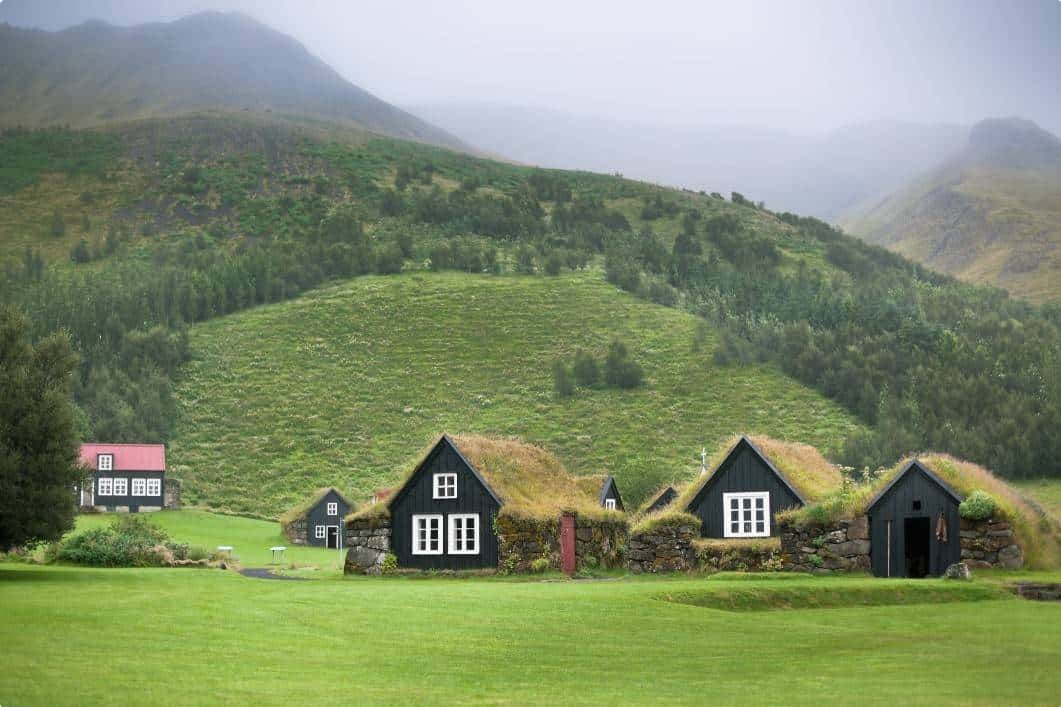

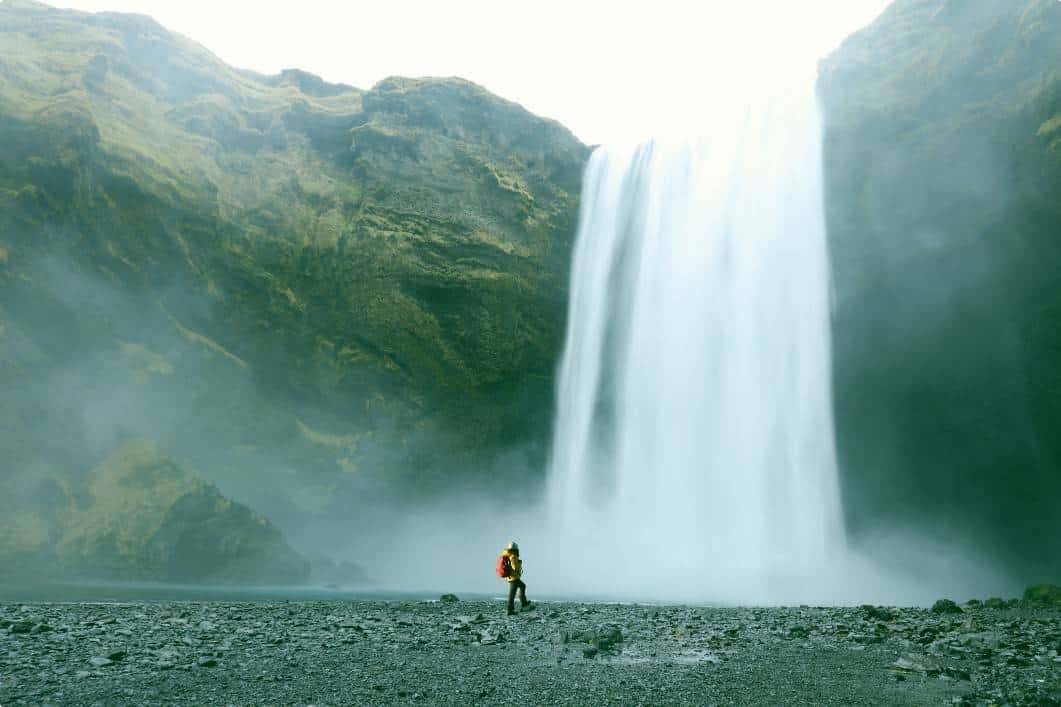
If you’d like to learn more, do join Odyssey Traveller’s Culture & Wilderness tours to Iceland with departures in May and September. This small group tour is a 16-day circumnavigation of this fascinating island, designed for the mature-aged traveller. We experience Iceland’s spectacular glaciers, geysers, and waterfalls, as we cruise among Arctic icebergs. Our fully escorted small group tour offers fresh insights into the history of Iceland, from settlement to the present day.
Take a look at the itinerary, and please call or send an email if you have further enquiries.
About Odyssey Traveller
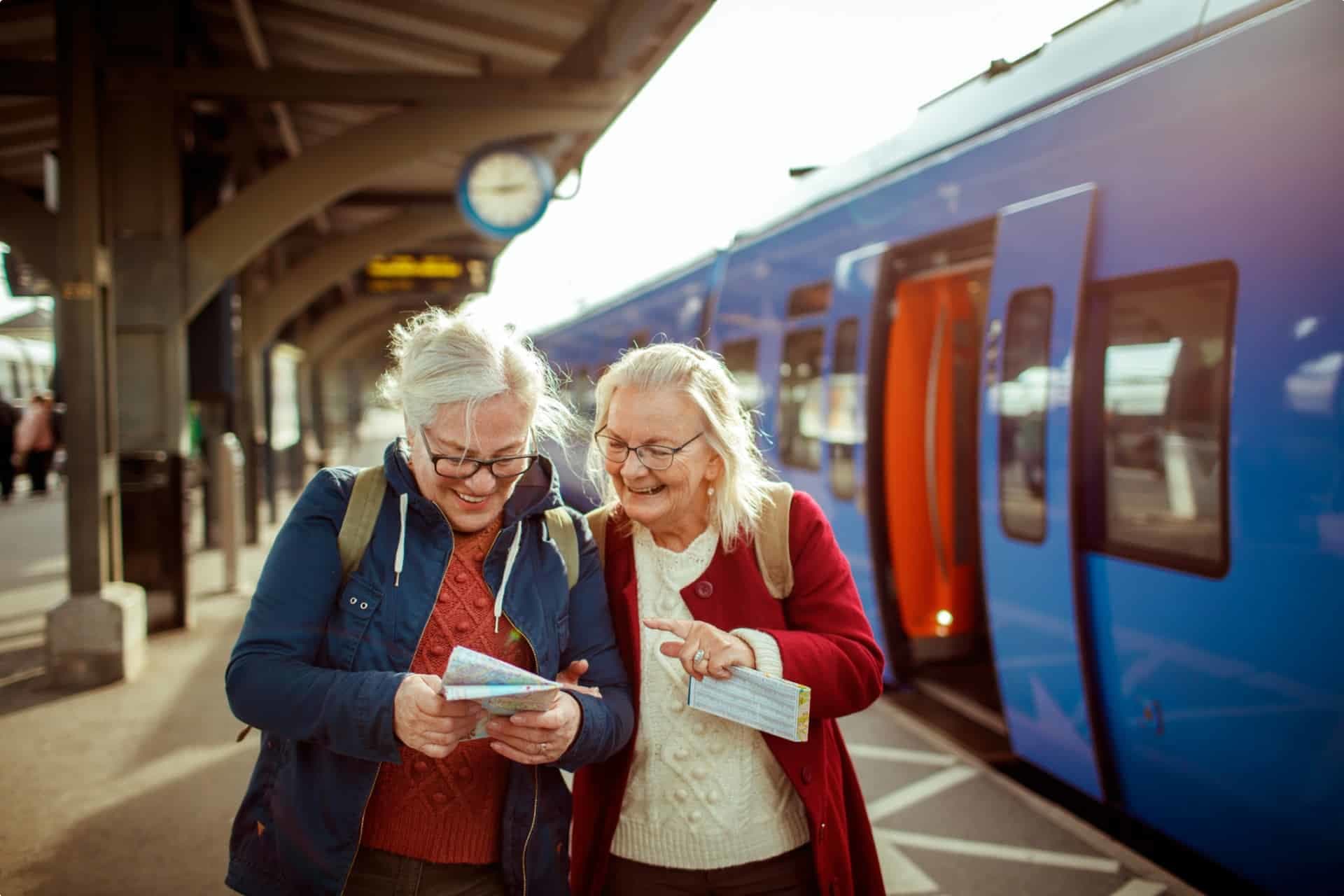
We specialise in educational small group tours for seniors, typically groups between six to 12 people from Australia, New Zealand, USA, Canada and Britain. Our maximum number of people on a tour is 18 mature aged travellers. Typically, our clients begin travelling with us from their mid 50’s onward. But be prepared to meet fellow travellers in their 80s and beyond! Both couples and solo travellers are very welcome on our tours. We have some 150 tours and offer 300 scheduled departures on offer each year. Odyssey has been offering this style of adventure and educational programs since 1983.
Odyssey Traveller is committed to charitable activities that support the environment and cultural development of Australian and New Zealand communities.
Odyssey Traveller scholarship for Australia & New Zealand University students.
We are also pleased to announce that since 2012, Odyssey has been awarding $10,000 Equity & Merit Cash Scholarships each year. We award scholarships on the basis of academic performance and demonstrated financial need. We award at least one scholarship per year. We’re supported through our educational travel programs, and your participation helps Odyssey achieve its goals. Students can apply for the scholarship by clicking on this link to find out more details.
Join our loyalty program when you join an international small group tour.
Every International small group tour taken typically contributes to your membership level in our Loyalty Program for regular travellers. Membership of the alumni starts when you choose to take your first international small group tour with Odyssey Traveller, discounts in tour pricing for direct bookings accrue from your third tour with Odyssey Traveller. To see the discounts and benefits of being a Bronze, Silver, Gold, and Diamond alumni member with us, please see this page.
For more information on Odyssey Traveller and our educational small group tours, visit and explore our website, and remember to visit these pages in particular:
- Terms and conditions applicable for booking an Odyssey Traveller tour.
- FAQ’s about Odyssey Traveller
Alternatively, please call or send an email.
Related Tours

17 days
May, SepIceland cultural and wilderness small group tour
Visiting Iceland
Our escorted tour gives guests an insight into the history of this Icelandic nation. Travelling as a small group, our daily itineraries explore the Jokulsarlon Glacier Lagoon and others, national parks and majestic waterfalls as we learn about Iceland’s natural heritage and its Viking past from experienced local guides. There is a single supplement for solo travellers.
From A$18,995 AUD
View Tour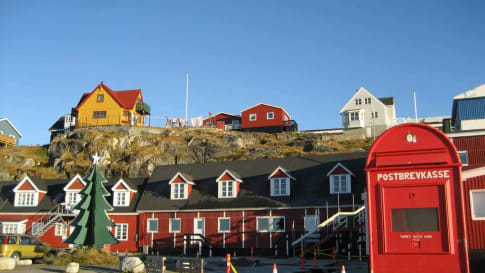
4 days
Sep, MayDiscover Greenland | Small Group Tour for Seniors
Visiting Greenland
Greenland is the largest island in the world, the majority of it lies above the Arctic Circle, and it is part of Denmark. Few places are quite so difficult to reach, we fly from Reykjavik to Nuuk. During this small group tour we have ensured that our travellers gets to this conversation-stopping land and, while we are there we obtain the most comprehensive overview of this vast landmass. We visit during the summer, experiencing the burst of seasonal flora, which caused the early voyagers to name it Greenland.
From A$6,750 AUD
View Tour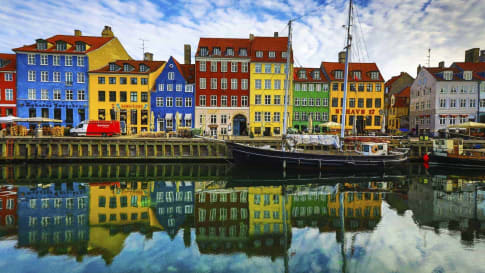
13 days
Jun, SepScandinavia tours for mature travellers
Visiting Denmark, Norway
Uncover on a small group tour for couples and solo travellers, a Viking past and view of the world’s biggest fjords on this journey through Scandinavia. In low-lying Denmark our small group journey takes us to visit the Zeeland, the sea land, and our program includes the vibrant capital of Copenhagen. In Norway we travel through endless forests, skirting great fjords to Bergen.
From A$14,995 AUD
View Tour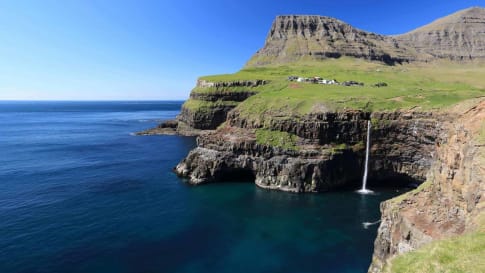
5 days
Apr, SepFaroe Islands Tour
Visiting Denmark
Few European tour companies offer small group journeys to the Faroe Islands. This five-day small group tour designed for mature couples and solo travellers. Local guides take you on trips off the beaten path to visit some of the islands' most stunning sights and to explore the capital of Tórshavn.
From A$7,695 AUD
View Tour
40 days
MayArctic circle tour
Visiting Denmark, Finland
A 40 day small group tour for senior couples and mature solo travellers interested in exploring the Arctic circle. The group with a program leader explores Greenland, Iceland, Faroe Islands of Denmark, Norway, Sweden and Finland. The tour makes use of the long summer night light for your enjoyment learning about viking history and trade and the Sami.
From A$44,995 AUD
View TourArticles
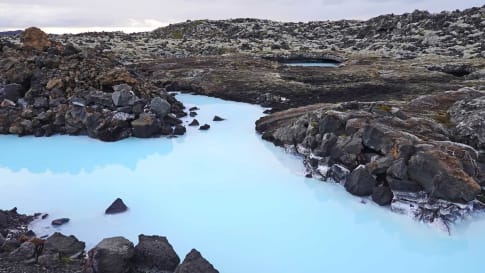
Blue Lagoon, Iceland
The amazing Blue Lagoon is a popular tourist attraction in Iceland, named for its milky-blue geothermal seawater. The lagoon, set in a black lava field, was formed in 1976
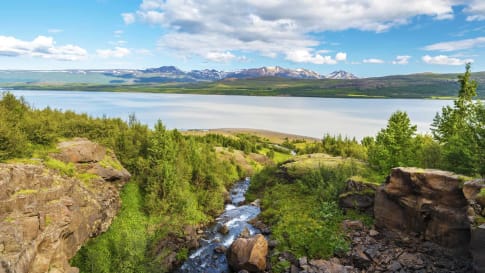
Egilsstadir, Iceland
Egilsstadir, Iceland Egilsstaðir on the banks of the Lagarfljót river is the largest town in East Iceland. As of 2018, it is home to fewer than 3,000 people. With its natural wonders as well as…
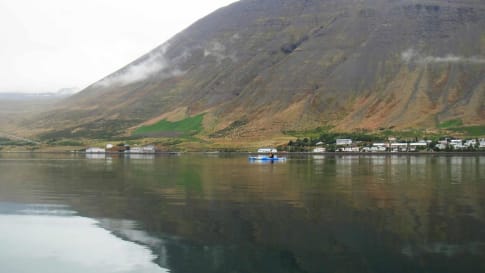
Isafjordur, Iceland
Isafjordur, Iceland Ísafjörður in the largest town in Iceland’s Westfjords peninsula, but is home to fewer than 3,000 residents. The town, fuelled by a thriving fishing industry, did not form on this site until after…

Lunar landscapes and geology in Iceland
Iceland has a fascinating place in the contemporary geologic record of Earth. But whilst the geology makes the landscape it is the people, the wildlife and the culture that attract many to visit. For Odyssey's small group package tour of Iceland for mature and senior travellers whether couples or a single traveller this is a great journey.
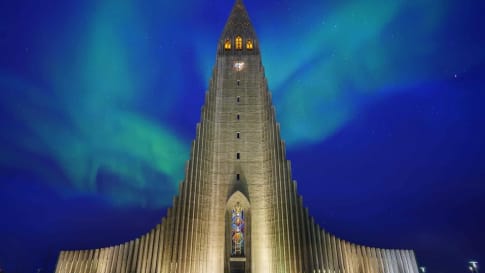
Reykjavik, Iceland
Reykjavik, the capital and largest city of Iceland, will most likely be your first port of entry into this fairly isolated island country.

The History of the Settlement of Iceland
Marooned at the top of the globe, somewhere in the North Atlantic Ocean, lies the island nation of Iceland, a land of vivid contrasts where nature reigns supreme in her most dramatic form. Iceland is the world's oldest democracy and boasts more writer's per capita than any other country in the world. It is said that many Icelanders still believe in the mythical figures of the Norse past, such as elves, trolls and fairies, which may be due to the country's literary history including its famous sagas, epic tales based on Iceland's settlement from around 9-11 AD.
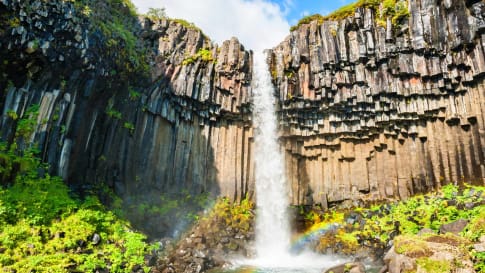
Skaftafell National Park, Iceland
Skaftafell National Park, Iceland The Skaftafell National Park was established in 1967, but became part of the newly created Vatnajokull National Park in 2008. Skaftafell, which spans 500 square kilometres, now forms the park’s southern…
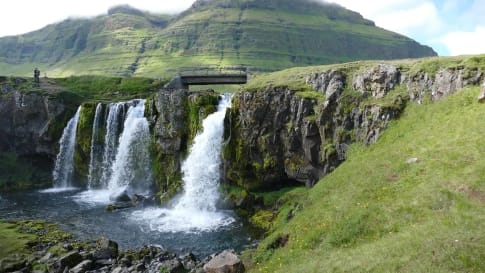
Snaefellsnes Peninsula, Iceland
Snaefellsnes Peninsula, Iceland The Snaefellsnes Peninsula is located in West Iceland about 120 kilometres from the Icelandic capital of Reykjavik. Dubbed “Iceland in miniature”, a day trip to the Snaefellsnes Peninsula offers beautiful, diverse scenery…

The Golden Circle, Iceland
Iceland's "The Golden Circle" is a popular tourist route which includes the Geysir Geothermal Area, Gullfoss waterfall, and the Þingvellir (Thingvellir) National Park.
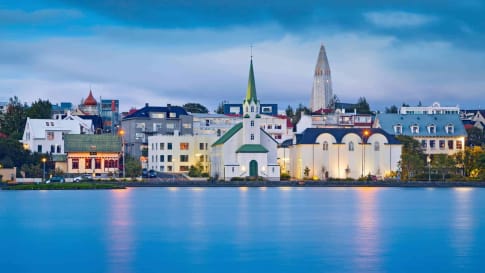
Visiting Iceland for Mature-Aged and Senior Travellers
Visiting Iceland for Mature-Aged and Senior Travellers If you are a mature-aged or senior traveller who have been thinking about visiting Iceland, then this article might just give you a little nudge. Iceland offers soaring…



